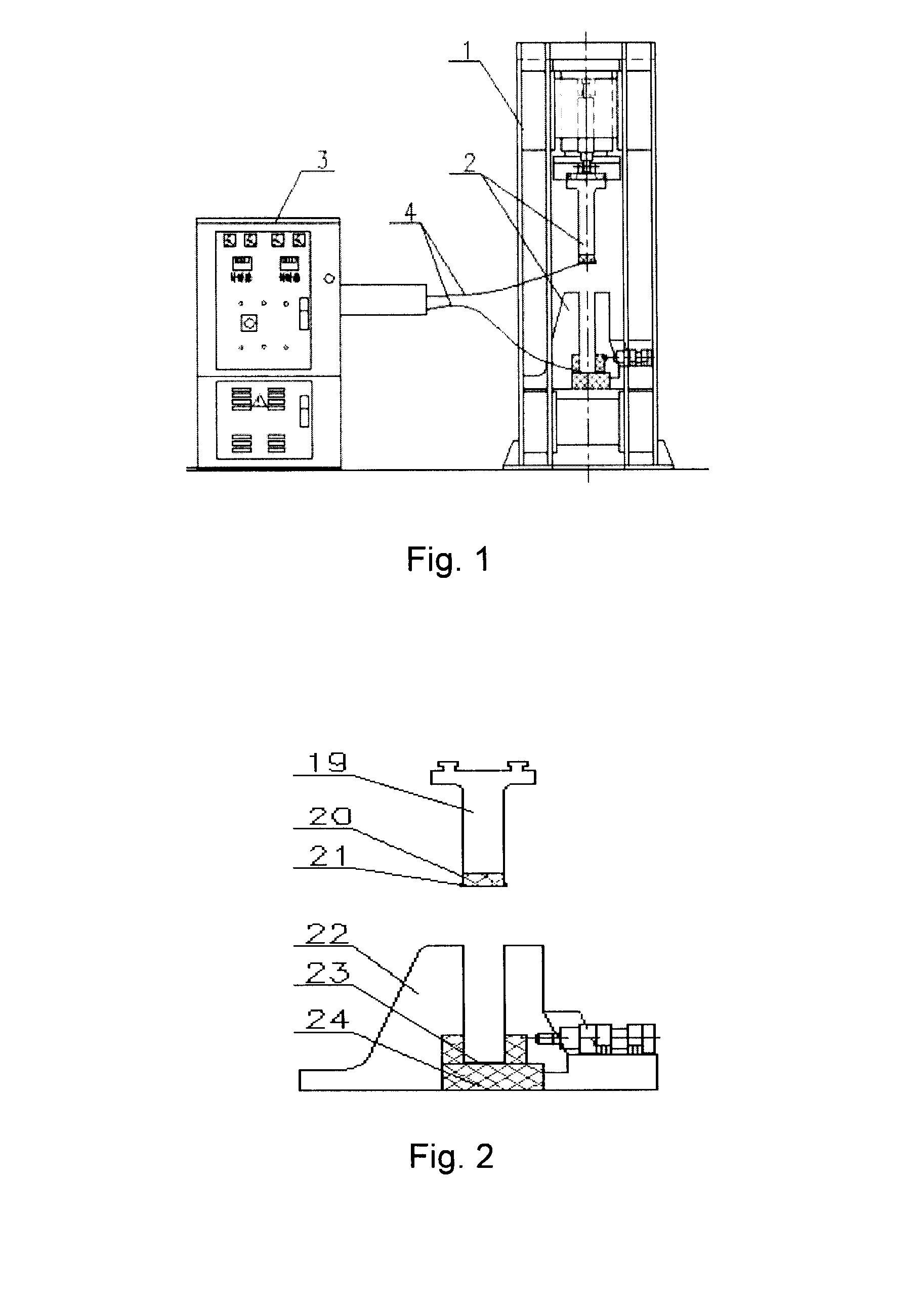Manufacturing Process of a Composite Bamboo Board
a manufacturing process and composite bamboo technology, applied in the field of manufacturing process of composite bamboo boards, can solve the problems of high cost of manufacturing bamboo boards, lack of competitive power, large amount of adhesives, etc., and achieve the effects of improving adhesives, high density, and improving hot pressing processes
- Summary
- Abstract
- Description
- Claims
- Application Information
AI Technical Summary
Benefits of technology
Problems solved by technology
Method used
Image
Examples
example 1
[0051]This example is to illuminate the manufacturing process of a composite bamboo board according to this invention.
[0052]Add 950 g urea-formaldehyde resin powder, 10 g silane coupling agent KH-560, 10 g OP-10 (produced by Shenzhen Jintenglong Shiye Corporation), 12 g solidifying agent ammonium chloride, 10 g light calcium carbonate, and 10 g urea into 2000 mL water, and then uniformly mix to produce adhesive solution.
[0053]Use 1200 mm long whangees, longitudinally cut it into two pieces and peel off the green and yellow outer covering of the bamboo to make them uniform in color. Then use roller press to grind the whangee into loose reticulate bamboo fiber bundles whose diameters are 0.01-0.1 mm, wherein the bamboo fibers not totally detached, therefore to form bamboo fiber bundles connected with others. Dry the bamboo fiber bundles under 60° C. for 8 hours, then dip them in the above said adhesive solution for 2 min. Remove and dry to produce bamboo fiber bundles whose adhesive c...
example 2
[0054]This example is to illuminate the manufacturing process of a composite bamboo board according to this invention.
[0055]Add 965 g urea-formaldehyde resin, 10 g silane coupling agent KH-570, 2 g peregal A-20, 15 g solidifying agent ammonium chloride, 5 g melamine, and 3 g urea into 2000 mL water, uniformly mix to produce adhesive solution.
[0056]Use 2000 mm long moso-bamboo pieces, longitudinally cut it into two pieces and peel off the green and yellow outer covering of the bamboo to make them uniform in color. Then use roller press to grind the moso-bamboo pieces into loose reticulate bamboo fiber bundles whose diameters are 0.001-0.01 mm, wherein the bamboo fibers not totally detached, therefore to form bamboo fiber bundles connected with others. Dry the bamboo fiber bundles under 80° C. for 40 min in a infrared dryer, then dip them in the above said adhesive solution for 0.5 min. Remove and dry to produce bamboo fiber bundles whose adhesive content is 16 wt % and water content ...
example 3
[0057]This example is to illuminate the manufacturing process of a composite bamboo board according to this invention.
[0058]Add 980 g phenol-formaldehyde resin, 10 g silane coupling agent KH-590, 2 g OP-10, 5 g starch, and 3 g urea into 2000 mL water, uniformly mix to produce adhesive solution.
[0059]Use 1000 mm long moso-bamboo pieces, longitudinally cut it into two pieces and peel off the green and yellow outer covering of the moso-bamboo to make them uniform in color. Then use roller press to grind the moso-bamboo pieces into loose reticulate bamboo fiber bundles whose diameters are 0.001-1 mm, wherein the bamboo fibers not totally detached, therefore to form bamboo fiber bundles connected with others. Dry the bamboo fiber bundles by infrared drying until the water content is 10 wt %, then dip the dried bamboo fiber bundles in the above said adhesive solution for 1 min. Remove and dry to produce bamboo fiber bundles whose adhesive content is 10 wt % and water content is 10 wt %. T...
PUM
| Property | Measurement | Unit |
|---|---|---|
| frequency | aaaaa | aaaaa |
| pressure | aaaaa | aaaaa |
| diameter | aaaaa | aaaaa |
Abstract
Description
Claims
Application Information
 Login to View More
Login to View More - R&D
- Intellectual Property
- Life Sciences
- Materials
- Tech Scout
- Unparalleled Data Quality
- Higher Quality Content
- 60% Fewer Hallucinations
Browse by: Latest US Patents, China's latest patents, Technical Efficacy Thesaurus, Application Domain, Technology Topic, Popular Technical Reports.
© 2025 PatSnap. All rights reserved.Legal|Privacy policy|Modern Slavery Act Transparency Statement|Sitemap|About US| Contact US: help@patsnap.com


